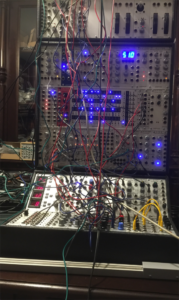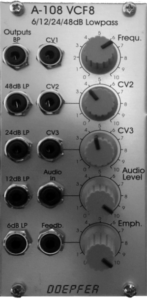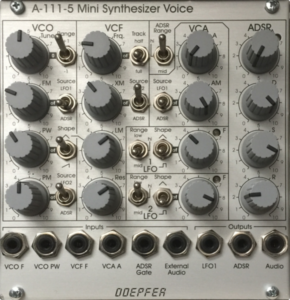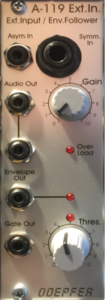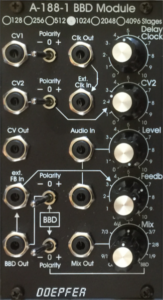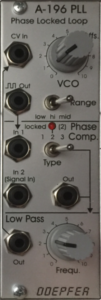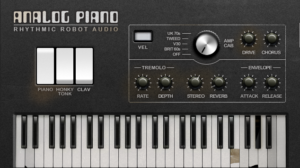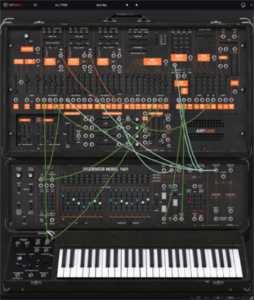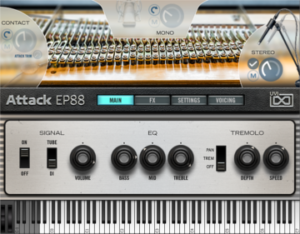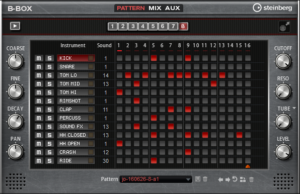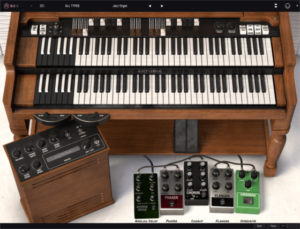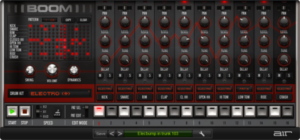A-100
“In the A-100, Doepfer have produced a capable and versatile analog modular synthesizer, built in the style of the classic modular systems of the seventies. The renaissance of analog synthesis in the last few years shows that analog sound production has a vital place alongside sampling and digital synthesis, and can produce sounds that are unobtainable by any other means. In addition to the unique sounds of its oscillators, filters, amplifiers, phasers, frequency shifters, and so on, analog synthesis can provide almost unbounded modulation opportunities, conventional and unconventional – limited only by the number and variety of modules available.
In designing the A-100, our priorities were: good sound quality; diversity of modules available; ease of integration into a MIDI system; and, maybe most important of all, affordability.
